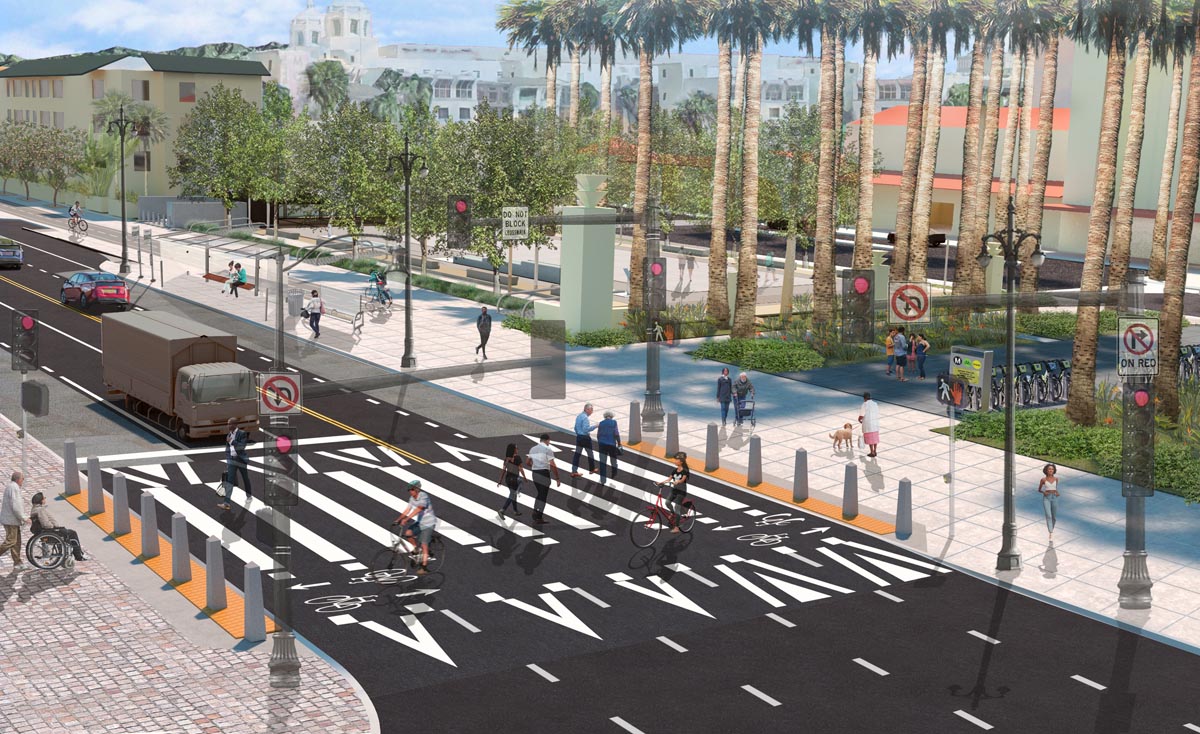 View Winners →
View Winners → Downtown LA residents form coalition in response to changes in Alameda corridor

In response to changes taking shape in Downtown Los Angeles, a group of property owners, community organizations, and other stakeholders formed a new coalition that will advocate for their neighborhood starting Tuesday.
Members of the Solutions Alameda Coalition seek an equitable vision of the Alameda Esplanade, a Metro project intended to connect the new Regional Connector subway in Little Tokyo and planned upgrades to Union Station.
In a statement issued Monday afternoon, members say SAC was created because they believe Alameda Street between the 10 and 101 freeways provides an opportunity to serve as a model for how “our region can and should” build communities — addressing key issues such as housing, homelessness, transportation and environmental challenges.
“The Alameda corridor presents a rare opportunity that is unmatched throughout the entire region. Whether it be building transit-oriented housing and walkable communities, or fostering equitable economic growth, this corridor can facilitate all of that, and more,” Mark Falcone of Continuum Partners, chairman of Solutions Alameda Coalition, said in a statement.
He added, “Our coalition aims to seize the moment, and make our vision of a thriving Downtown LA, become a reality.”
Metro’s Alameda Street Mobility Project aims to close the Alameda Esplanade active transportation gap between Arcadia and Commercial streets over the 101 freeway. According to Metro documents, the project could bring forward new bike and pedestrian paths, and major transit changes, but it is unfunded so far.
The city of Los Angeles’ DTLA 2040 Community Plan will also drive forward future changes to the neighborhood with a focus on increasing access to housing and job opportunities, and making the dense area more walkable.
In addition, Alameda may see changes from Metro’s Southeast Gateway Line, formerly known as the West Santa Ana Branch line, a 19.3-mile long rail line from Artesia to Downtown L.A.
The first phase of the Southeast Gateway Line is a 14.5 mile-rail line, starting in Artesia and ending at Slauson/A Line Station in the unincorporated area of Florence/Firestone. The second phase, the remaining 4.5- mile segment, will connect Slauson/A Line to Union Station in Downtown L.A.
SAC strongly supports the rail project, and that it will transform the area once complete.
“Great public transit envisions a neighborhood’s future needs,” Hilary Norton, executive director of FASTLinkDTLA, said in a statement. “In Downtown L.A., that means fostering interconnected systems of transit.”
Norton believes undergrounding — replacing overhead cables with underground cables — the project will create space for economic development and safe multi-modal transit opportunities such as streetcars, buses, biking, and walking.
She added, “Connectivity increases access to mobility, and mobility spurs economic growth.”
Metro has sought ways to reduce the costs for the second phase of the Southeast Gateway Line. The agency is considering plans for an aerial alignment running through the middle of Alameda Street instead of an underground station.
SAC argues the aerial alignment would increase traffic, limit walkability, and cause significant street level disturbances. The Southeast Gateway Line is still some years away, with an expected opening in 2035.
“As Downtown L.A. goes, so does the city and the region,” Nella McOsker, president and CEO of the Central City Association of Los Angeles and a member of SAC, said in a statement. “This is a tremendous opportunity to demonstrate how thoughtful transportation drastically improves quality of life for surrounding communities.”









































































































